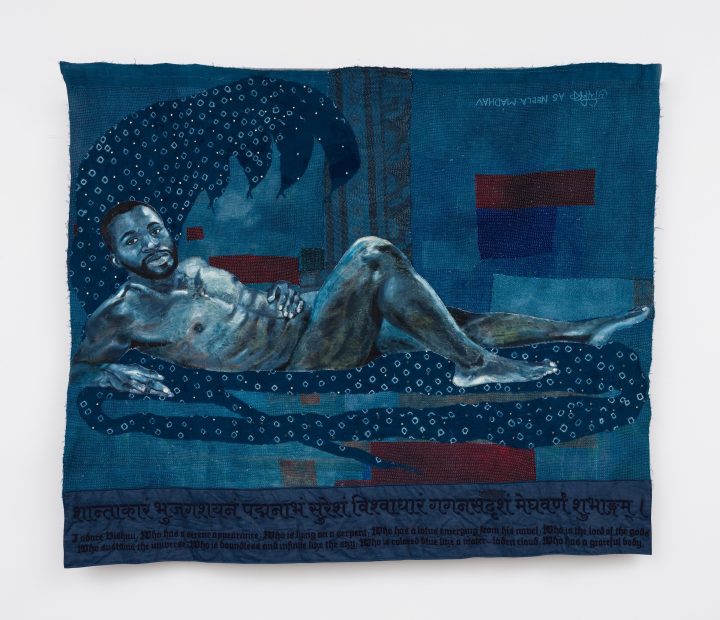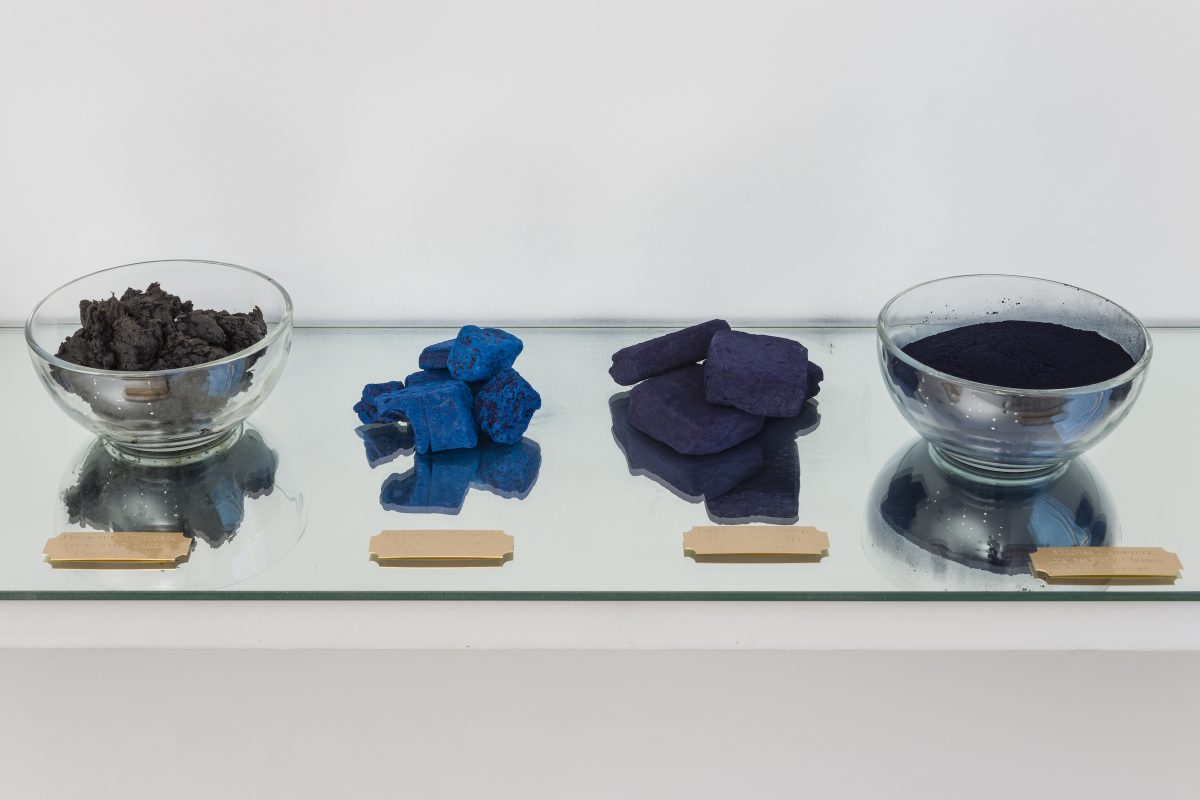
When I Get That Mood Indigo at M+B, Los Angeles is a tribute to the complex substance that is indigo, in which artist Bhasha Chakrabarti experiments with quilting, painting, and papermaking. The exhibition takes its title from Duke Ellington’s jazz standard “Mood Indigo” — “You ain’t never been blue, till you’ve had that mood indigo” — and traces the transnational history and layered affect of this blue pigment and dye.
While indigo’s etymology identifies it as a “product of India,” it has a long history of being grown and used around the world for over four millennia and was further globalized as major 18th-century indigo plantations were founded by colonial powers in both India and the American South. For this show,
Chakrabarti sourced indigo from various parts of the world — from India to Nigeria to Guatemala — after interacting with farmers, dyers, and traders in cities with ancient traditions of indigo dyeing. She maps these overlapping cartographies of trade, imperialism, and resistance in her work and traces the presence of indigo in conceptions of divinity, agricultural and textile histories, and musical traditions. For example, she layers the lyrics of Blues songs with Bengali protest songs about the “tyranny of blue,” sung by indigo plantation laborers.
Many of the works recycle used clothing and scraps that have been quilted in the style of kantha — a form of quilting originating in West Bengal, where the artist’s family is from — as well as in a style that is reminiscent of the African American quilting tradition from Gee’s Bend, Alabama, where Chakrabarti has spent time learning from and quilting with artists, like China Pettway and Mary Ann Pettway. The practice not only showcases the possibility of repair and mending, but is also a nod to the transnational feminist potential of women’s textile art and the assemblage techniques required for quiltmaking that parallel the networked origins of indigo dye and quilting itself.
“I’ve been seduced by indigo, teased and taunted by it, and left undeniably stained. Indigo has bled into every aspect of my life, or perhaps it was already there and I’m just seeing it,” said Chakrabarti over email.

In the largest series of work in the show, the artist depicts Black American friends as Hindu gods, goddesses, and mythological figures, who are described in poetry and texts as shyama (blue Black) or krsna (Black) but are traditionally rendered in manuscripts, miniatures, and murals using indigo. Chakrabarti’s portraits challenge the South Asian worldview in which deified figures are conceptualized as Black in writing but appear as indigo blue — a reflection of racism and prejudiced views around caste in India. By celebrating and giving a face to Blackness in Hinduism, Chakrabarti’s quilts propose an invigorating spiritual lens for Black and South Asian connectivity. In the artist’s words, “These works each embody a small discovery of the many ways that the bluest blue has connected black and brown people around the world through both histories of oppression and resistance.”
When I Get That Mood Indigo continues at M+B (612 North Almont Drive, West Hollywood, Los Angeles) through September 3.
0 Commentaires